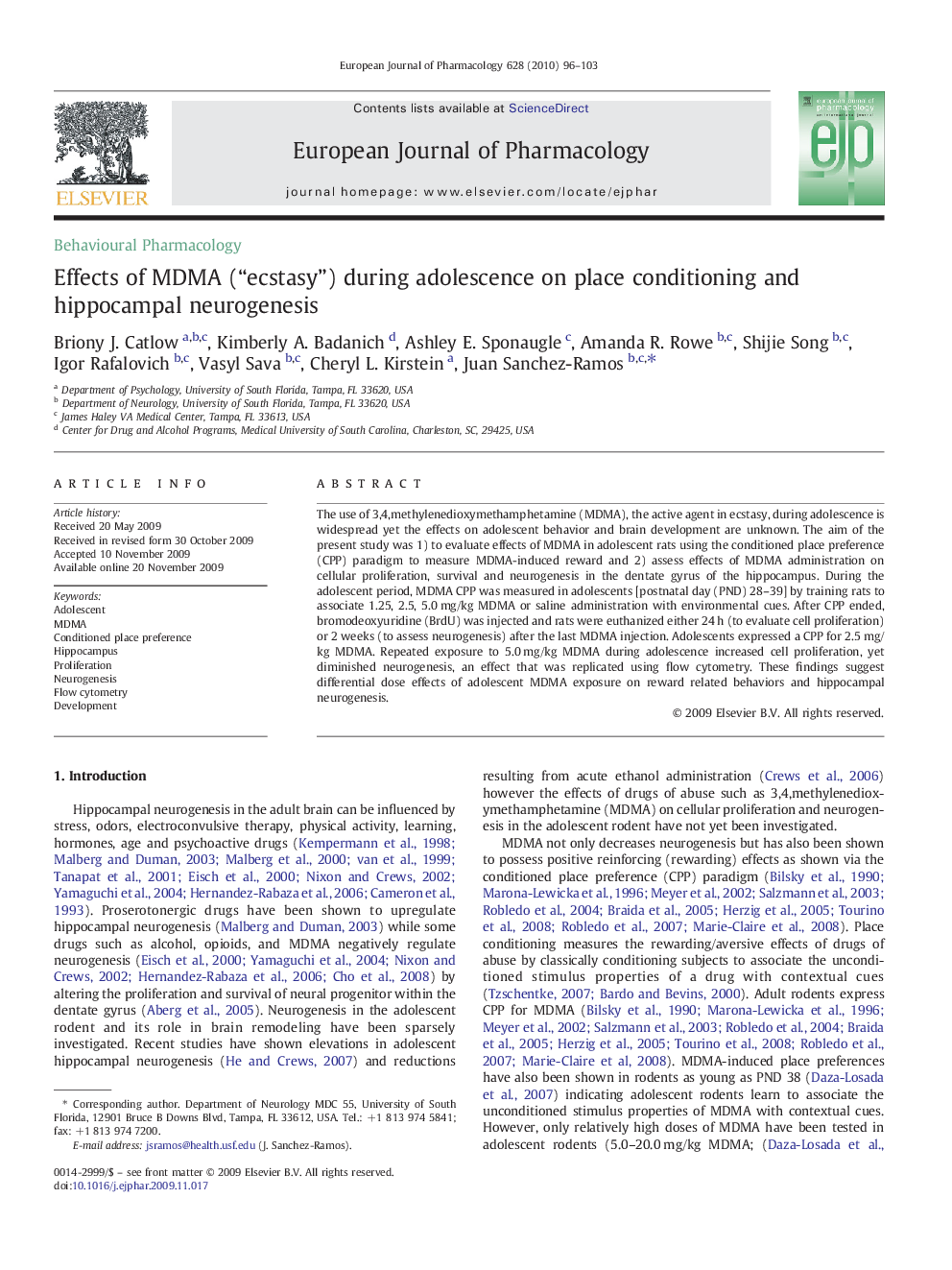| Article ID | Journal | Published Year | Pages | File Type |
|---|---|---|---|---|
| 2533809 | European Journal of Pharmacology | 2010 | 8 Pages |
The use of 3,4,methylenedioxymethamphetamine (MDMA), the active agent in ecstasy, during adolescence is widespread yet the effects on adolescent behavior and brain development are unknown. The aim of the present study was 1) to evaluate effects of MDMA in adolescent rats using the conditioned place preference (CPP) paradigm to measure MDMA-induced reward and 2) assess effects of MDMA administration on cellular proliferation, survival and neurogenesis in the dentate gyrus of the hippocampus. During the adolescent period, MDMA CPP was measured in adolescents [postnatal day (PND) 28–39] by training rats to associate 1.25, 2.5, 5.0 mg/kg MDMA or saline administration with environmental cues. After CPP ended, bromodeoxyuridine (BrdU) was injected and rats were euthanized either 24 h (to evaluate cell proliferation) or 2 weeks (to assess neurogenesis) after the last MDMA injection. Adolescents expressed a CPP for 2.5 mg/kg MDMA. Repeated exposure to 5.0 mg/kg MDMA during adolescence increased cell proliferation, yet diminished neurogenesis, an effect that was replicated using flow cytometry. These findings suggest differential dose effects of adolescent MDMA exposure on reward related behaviors and hippocampal neurogenesis.
